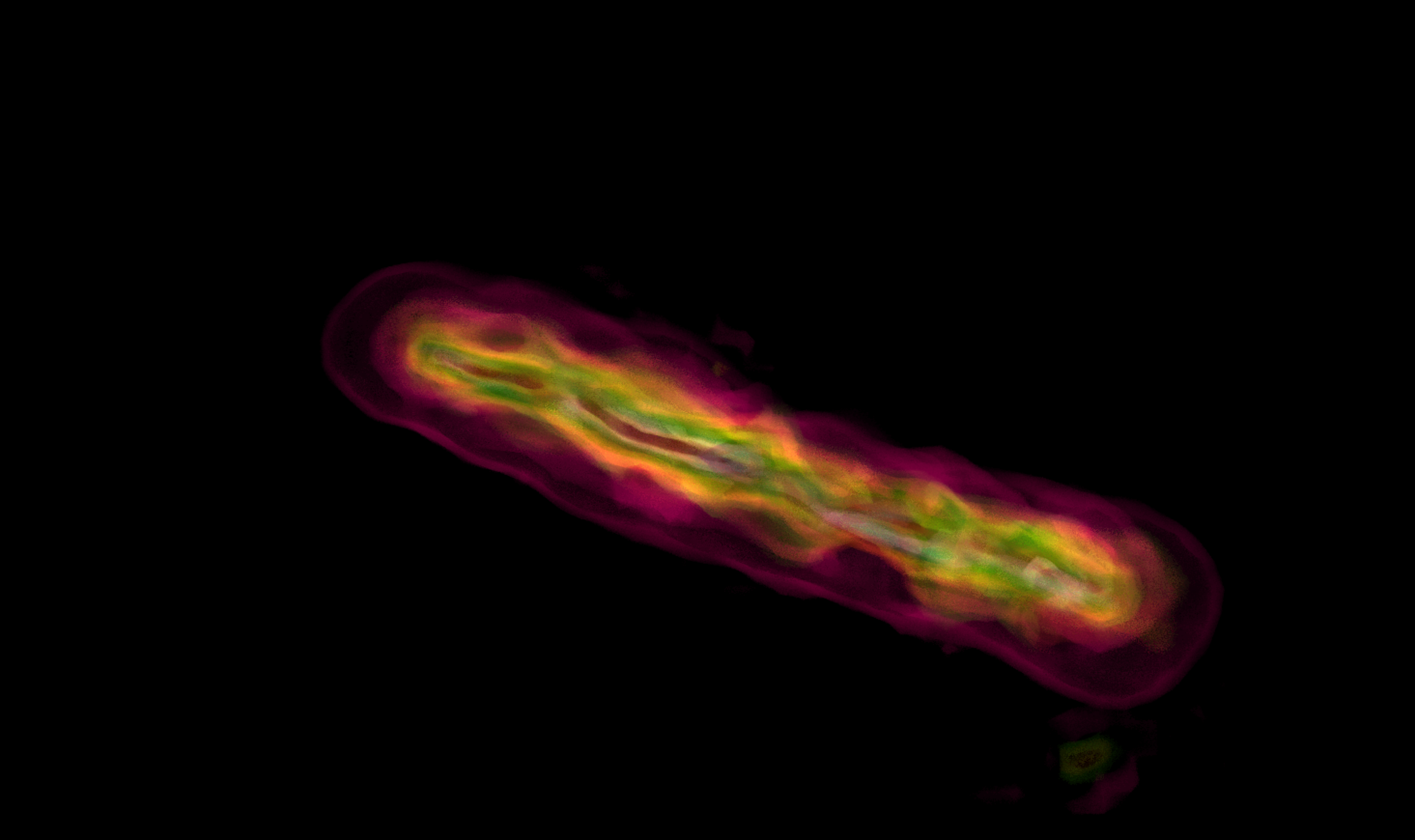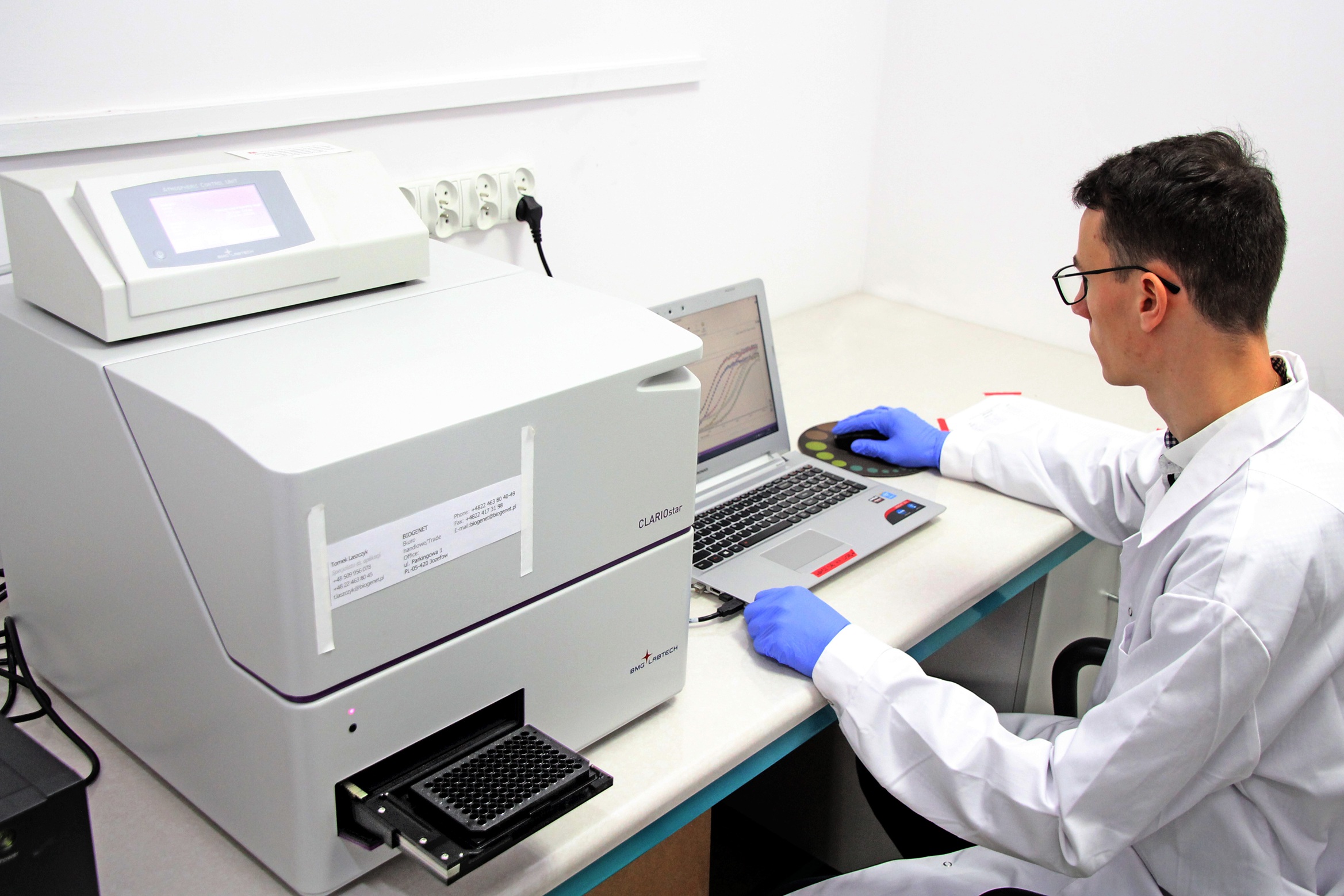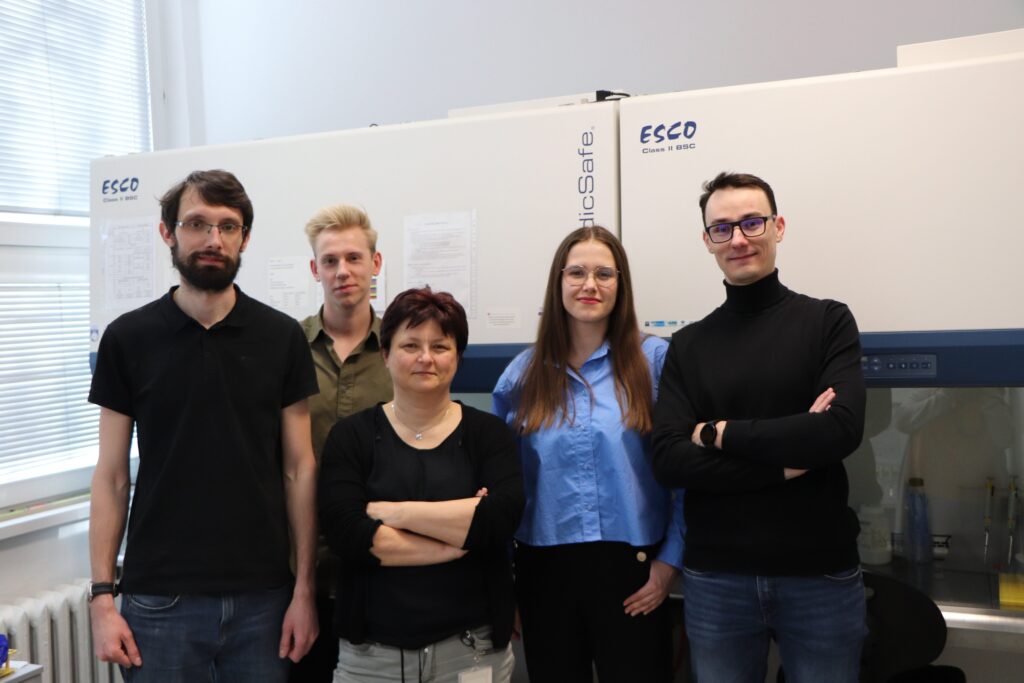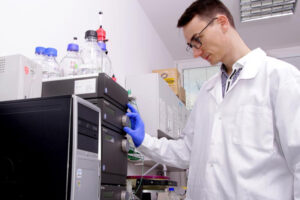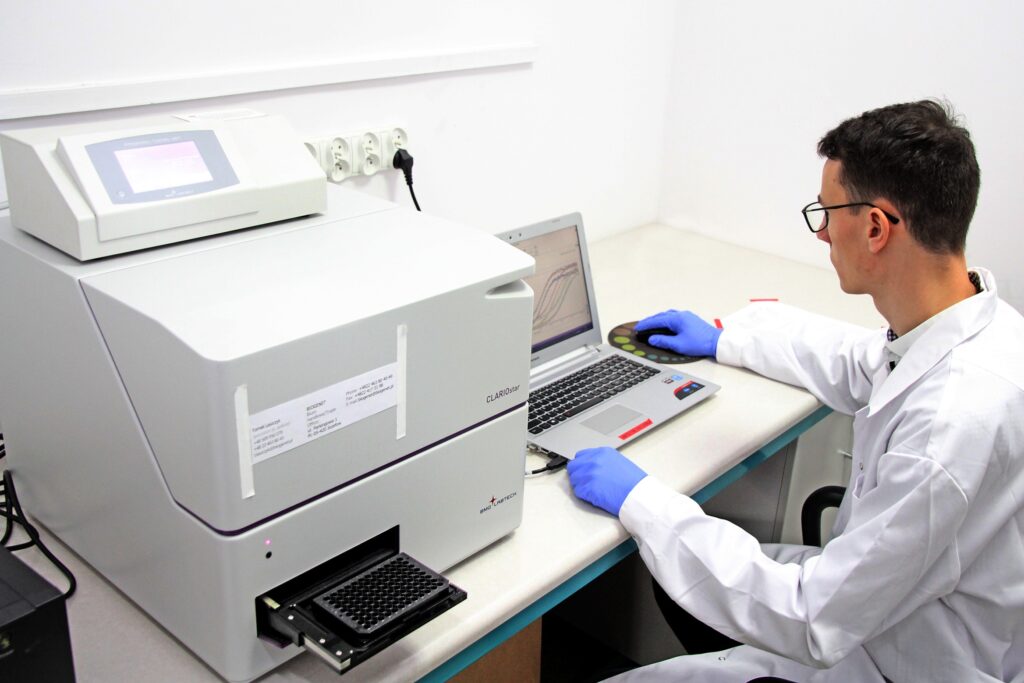We study fundamental cellular processes and mechanisms that enable bacteria to adapt to their environments, such as chromosome replication, the bacterial cell cycle, responses to stress, and resistance to antibiotics or other active substances.
Our primary focus is on pathogenic Campylobacteria species, including Helicobacter pylori, Campylobacter jejuni, and Arcobacter butzleri. We analyze these bacteria in relation to their unique characteristics and features that they share with other bacterial species.
The results of our research help to describe previously unknown processes and mechanisms at the molecular level. Furthermore, these findings may have practical implications in the future, as they pertain to essential physiological processes in pathogenic bacteria, their virulence and bacterial resistance to treatment.
Laboratory Head

Laboratory Head: Anna Pawlik, PhD, DSc (associate professor, 0000-0003-1824-1550)
Academic and Research Career:
- Habilitation (biology), IIET PAS, Wrocław, Poland (2011)
- Post-Doc. at Unité de Pathogénie Bactérienne des Muqueuses, Institute Pasteur, Paris, France (2004-2006)
- PhD degree in biology, IIET PAS, Wrocław, Poland (2003)
- M.Sc. degree in biotechnology, Faculty of Chemistry, Wrocław University of Science and Technology (1999)
Team management
- Head of the Laboratory (since 2016)
- PI in 7 research grants (2006-2025)
- Supervisor of 7 PhD students (2012-2025)
- Supervisor of >25 undergraduate/graduate students (2007-2025)
Scientific awards
- The distinction of the Committee of Molecular Cell Biology of the Polish Academy of Sciences in the Prof. K. Bassalik competition for the best Polish microbiological work (2015 and 2025)
- The special second prize awarded by the Director of the IIET PAS for the paper published in the journal with the highest impact factor (2010, 2022, 2024)
- The scientific prize awarded by the Polish Academy of Sciences Medical Science Department for the coauthors of the series of publications concerning the basic steps of the bacterial cell cycle: replication and segregation of bacterial chromosomes (2007)
- The Domestic Grant for Young Scientists funded by The Foundation for the Polish Science (2005)
Team
Secretary:
Specialists:
Technical Staff:
- Honorata Grzybowska (Labware & Media Kitchen)
PhD Students:
Most important scientific achievements
Characterization of Chromosome Replication Initiation in the Pathogenic Bacterium Helicobacter pylori. We have demonstrated the unique features of chromosome replication initiation in Helicobacter pylori: an unusual bipartite structure at the origin of replication (oriC), which is atypical for Gram-negative bacteria, and a topology-dependent interaction between the initiator protein DnaA and oriC.
We have also identified previously unknown regulators of the initiation process for chromosome replication in Helicobacter pylori: HobA and HP1021. Both proteins play a role in the formation of the replication initiation complex. HobA interacts with DnaA, while HP1021 interacts with oriC. Our research indicates that HP1021 functions as a redox sensor protein.
Furthermore, we discovered the Campylobacteria energy and metabolism regulator (CemR) protein, which regulates metabolic processes related to energy usage in Campylobacteria species based on oxygen availability in the environment.
Research methods
- mutant strains (e.g., growth curves, gene expression analysis, RT-qPCR and protein western blotting, other tests dedicated to the analysis of the function of the genes, proteins, or DNA regions under study)
- production and purification of recombinant proteins in various affinity chromatography systems (e.g., His-tag, Strep-tag, MBP, FLAG) or by tag-free methods
- biochemical characterization of proteins
- biomolecule interaction analyses (EMSA, footprinting, ChIP-PCR, protein cross-linking, affinity chromatography, gel filtration, and others)
- analyses of the antimicrobial activity of compounds
Key equipment
- Fully equipped molecular biology and microbiology laboratories
- Class II biosafety laboratory
- Gas replacement culture system for anaerobic and microaerophilic bacteria (PetriSphere with jars)
- Isotope laboratory (class III)
- Clariostar multimode microplate reader with Atmospheric Unit Control ACU (BMGLabtech)
- Fluorescent microscope Zeiss Axioimager M1
Most important projects (during the last 10 years)
- The role of non-coding RNAs in Helicobacter pylori response to oxidative stress and the activity of the HP1021 regulon. National Science Centre, Preludium 21, (2023-2025) (PI Mateusz Noszka)
- The role of HP1021-like orphan response regulators in physiology and virulence of selected pathogenic species of Epsilonproteobacteria. National Science Center OPUS17, (2020-2023) (PI Anna Pawlik)
- Building bacterial orisome on bipartite origins – structural, functional and regulatory aspects of the process based on the analysis of the initiation of Helicobacter pylori chromosome replication. National Science Center Sonata Bis3 (2014-2020) (PI Anna Pawlik).
- Initiation of chromosome replication in Epsilonproteobacteria – identification and comparative analysis of the crucial factors. Foundation for Polish Science Parent-BRIDGE (grant for parents returning to research work POMOST) (2013-2015) (PI Anna Pawlik)
- Replication and segregation mechanisms of bacterial chromosomes – identification of new antibiotic drug targets for Helicobacter pylori and Mycobacterium tuberculosis. The EIT+ research grant (2009-2014) (PI Jolanta Zakrzewska-Czerwińska)
Selected publications
- Noszka M., Strzałka A., Muraszko J., Hofreuter D., Abele M., Ludwig C., Stingl K., Zawilak-Pawlik A. CemR atypical response regulator impacts energy conversion in Campylobacteria. mSystems 2024 e0078424. Volume 9 Issue 8 doi: 10.1128/msystems.00784-24 https://pubmed.ncbi.nlm.nih.gov/38980050/
- Noszka M., Strzałka A., Muraszko J., Kolenda R,. Meng C., Ludwig C., Stingl K., Zawilak-Pawlik A. Profiling of the Helicobacter pylori redox switch HP1021 regulon using a multi-omics approach. Nat Commun. 2023 14(1):6715. https://pubmed.ncbi.nlm.nih.gov/37872172/
- Jaworski P., Zyla-Uklejewicz D., Nowaczyk-Cieszewska M., Donczew R., Mielke T., Weigel C., Zawilak-Pawlik A. (2021) Putative Cooperative ATP-DnaA Binding to Double-Stranded DnaA Box and Single-Stranded DnaA-Trio Motif upon Helicobacter pylori Replication Initiation Complex Assembly. Int J Mol Sci. 22(12):6643. https://pubmed.ncbi.nlm.nih.gov/34205762/
- Szczepanowski P., Noszka M., Żyła-Uklejewicz D., Pikuła F., Nowaczyk-Cieszewska M., Krężel A., Stingl K., Zawilak-Pawlik A. (2021) HP1021 is a redox switch protein identified in Helicobacter pylori. Nucleic Acids Res. 49(12):6863-6879. https://pubmed.ncbi.nlm.nih.gov/34139017/
- Nowaczyk-Cieszewska, M., Zyla-Uklejewicz, D., Noszka, M., Jaworski, P., Mielke, T., and Zawilak-Pawlik, A.M. (2020) The role of Helicobacter pylori DnaA domain I in orisome assembly on a bipartite origin of chromosome replication. Mol Microbiol 113: 338–355. https://pubmed.ncbi.nlm.nih.gov/31715026/
- Kowalik M., Masternak J., Łakomska I., Kazimierczuk K., Zawilak-Pawlik A., Szczepanowski P., Khavryuchenko O.V., Barszcz B. (2020) Structural insights into new Bi(Iii) coordination polymers with pyridine-2,3-dicarboxylic acid: Photoluminescence properties and anti-Helicobacter pylori International Journal of Molecular Sciences, 21 (22), art. no. 8696, pp. 1-26. https://pubmed.ncbi.nlm.nih.gov/33218028/
- Zawilak-Pawlik A., Zarzecka U., Żyła-Uklejewicz D., Lach J., Strapagiel D., Tegtmeyer N., Böhm M., Backert S., Skorko-Glonek J. (2019) Establishment of serine protease htrA mutants in Helicobacter pylori is associated with secA Scientific Reports, 9 (1), art. no. 11794. https://pubmed.ncbi.nlm.nih.gov/31409845/
- Jaworski P., Donczew R., Mielke T., Weigel C., Stingl K., Zawilak-Pawlik A. (2018) Structure and function of the Campylobacter jejuni chromosome replication origin. Frontiers in Microbiology, 9 (JUL), art. no. 1533. https://pubmed.ncbi.nlm.nih.gov/30050516/
- Jaworski P., Donczew R., Mielke T., Thiel M., Oldziej S., Weigel C., Zawilak-Pawlik A. (2016) Unique and universal features of epsilonproteobacterial origins of chromosome replication and DnaA-DnaA box interactions. Frontiers in Microbiology, 7 (SEP), art. no. 1555. https://pubmed.ncbi.nlm.nih.gov/27746772/
- Donczew R., Makowski L., Jaworski P., Bezulska M., Nowaczyk M., Zakrzewska-Czerwińska J., Zawilak-Pawlik A. (2015) The atypical response regulator HP1021 controls formation of the Helicobacter pylori replication initiation complex. Molecular Microbiology, 95 (2), pp. 297-312. https://pubmed.ncbi.nlm.nih.gov/25402746/

